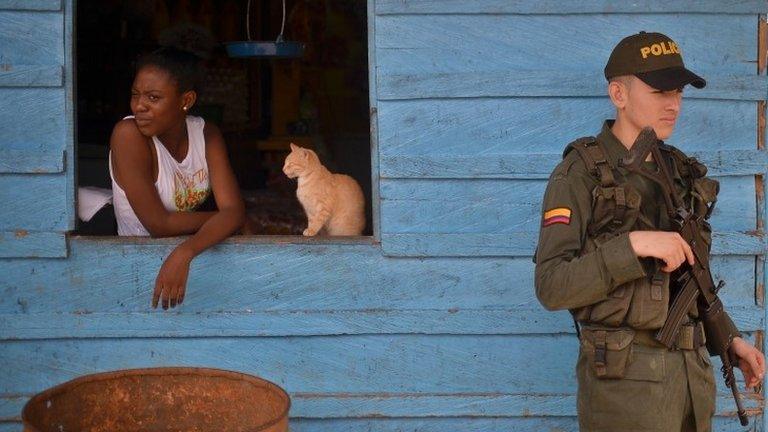Why has Colombia seen a rise in activist murders?
- Published
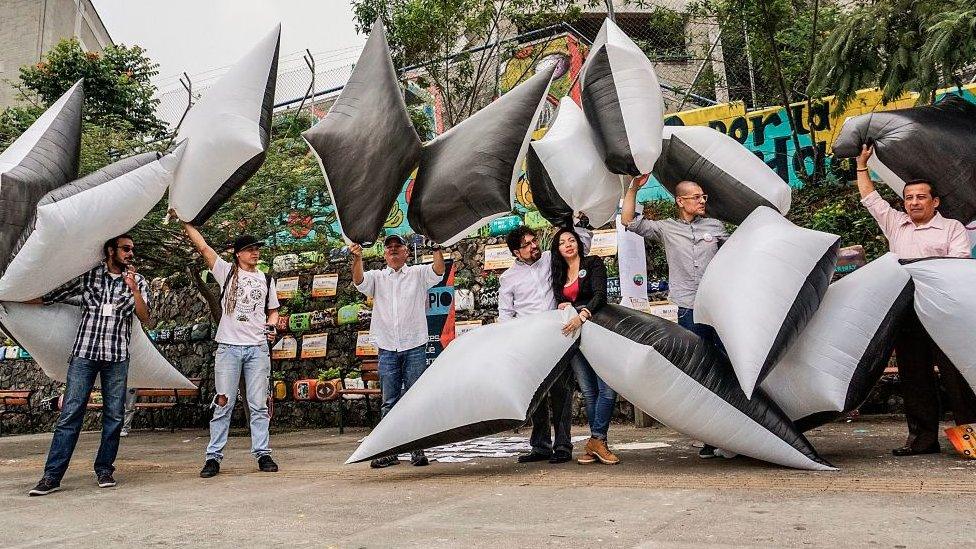
Protesters in Medellin hold inflatables to represent social leaders killed so far in 2017
In 2016, Colombia's homicide rate dropped to its lowest in four decades, at some 12,000 cases. And yet the number of social leaders and human rights defenders killed has been on the rise.
By early May, the office of the United Nations High Commissioner for Human Rights confirmed 14 murders of human rights defenders since the beginning of 2017.
They said they had another 10 cases pending verification.
Francisco Gómez, a social leader in Arauca province, in the east of the country, only narrowly escaped becoming part of these statistics.
He had to spend a month in an intensive care unit after two men entered his house in the early hours in February, sneaking into the room where he was sleeping, and stabbing him in the stomach, chest and legs.
A member of a local human rights organisation, Mr Gomez survived thanks to the quick help offered by Juan Torres, a member of the left-wing Marcha Patriótica party with whom he shared the house.
"Hadn't I been at home he would have bled to death," Mr Torres told the BBC.
As it was, Mr Gómez had a heart attack just before entering the operating room, but luckily it did not prove fatal.
And if he is to be considered one of the lucky ones, it paints a serious picture.
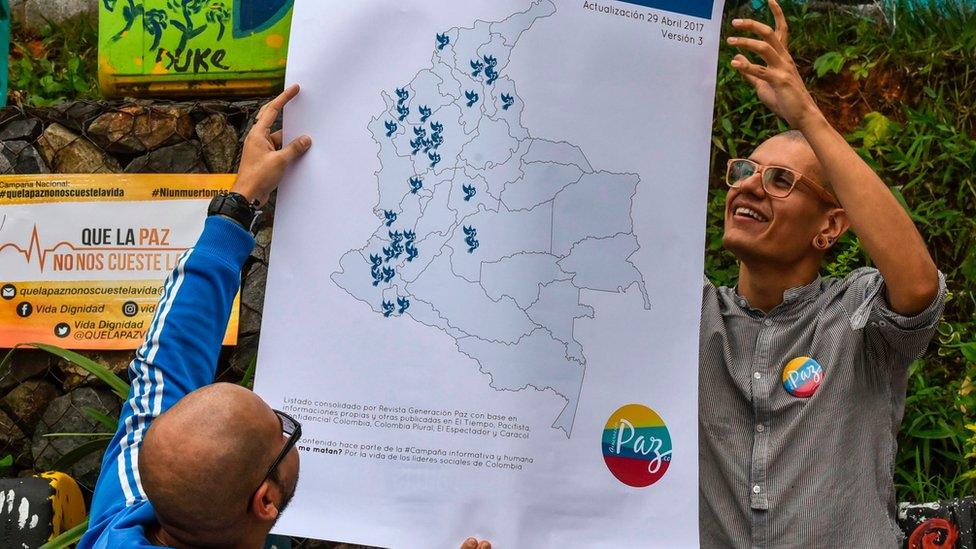
At a protest in May, men put up a map of Colombia marked with the places where social leaders have been killed since the peace deal was signed
Exact figures for the number of deaths are hard to come by. Non-governmental organisation Somos Defensores (We Are Defenders) says 80 social leaders and human rights activists were killed last year.
The UN has a figure of 64, while the state ombudsman puts it even higher, at more than 100.
Part of the discrepancy comes from differences in defining human rights leaders. Yet they all agree on one thing: the numbers have increased since 2015.
Todd Howland, a representative of the UN's Office of the High Commissioner for Human Rights in Colombia, told the BBC that this could be linked to the after-effects of the country's peace agreement between the government and Farc guerrillas.
Although it was signed at the end of 2016, the wheels were already in motion in the previous year, with the militants gradually leaving the areas they had historically controlled, and thus creating a power vacuum.
"You can explain almost the whole increase, and more, based on what is happening with the Farc's demobilisation," said Mr Howland.
Some of the people murdered are thought to have had specific links to the Farc; others may have posed a threat to illegal groups, usually criminal gangs trying to establish themselves in the areas.
"I do not think there's a group of people who sit down to say, 'Let's kill these people because we do not like peace'," said Paula Gaviria, a human rights adviser to the Colombian presidency.
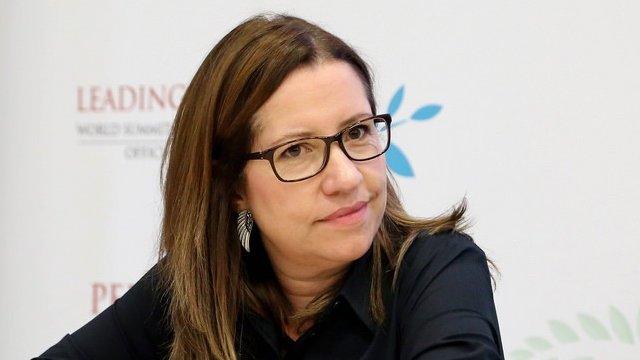
Paula Gaviria says there are people eager to suggests there were no benefits from the peace deal
"But obviously," she said, "killing social leaders is generating a sense in communities and public opinion that there is no positive impact of peace."
Ms Gaviria admitted that perpetrators still did not feel killing a social leader was high risk. For that to change, she said, investigations and convictions were crucial.
Mr Howland added: "The Colombian state has a responsibility to protect the rights of all their citizens, and the specific responsibility of protecting human rights defenders."
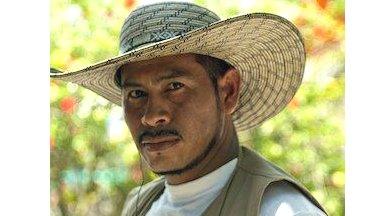
William Castillo Chima was killed on 7 March 2016
William Castillo Chima, a 43-year-old member of Marcha Patriótica and leader of a local human rights organisation in the gold mining area El Bagre, in the central Antioquia province, is one of the unlucky ones.
In March last year, he was having an early-evening soft drink in a local bar, when some men entered and shot him dead.
He was a very active social leader, according to his friend Camilo Villamil, who worked with the same workers' rights group.
"He was always reporting on armed groups, paramilitary groups, state forces and corruption," he told the BBC.
Mr Villamil said his friend was killed by a criminal gang and that other leaders - including himself - remained at risk.
Everyone the BBC spoke to agrees that the homicides of social leaders and human rights defenders will continue in Colombia.
The UN's Todd Howland said they would only stop "when there's economic, social and political inclusion in the areas [where the murders take place]".
- Published13 May 2017
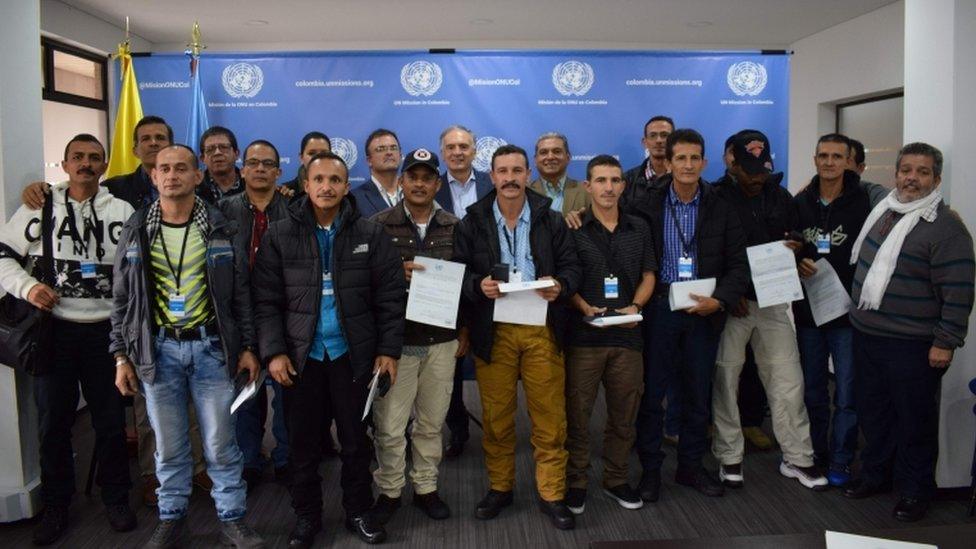
- Published9 March 2017
